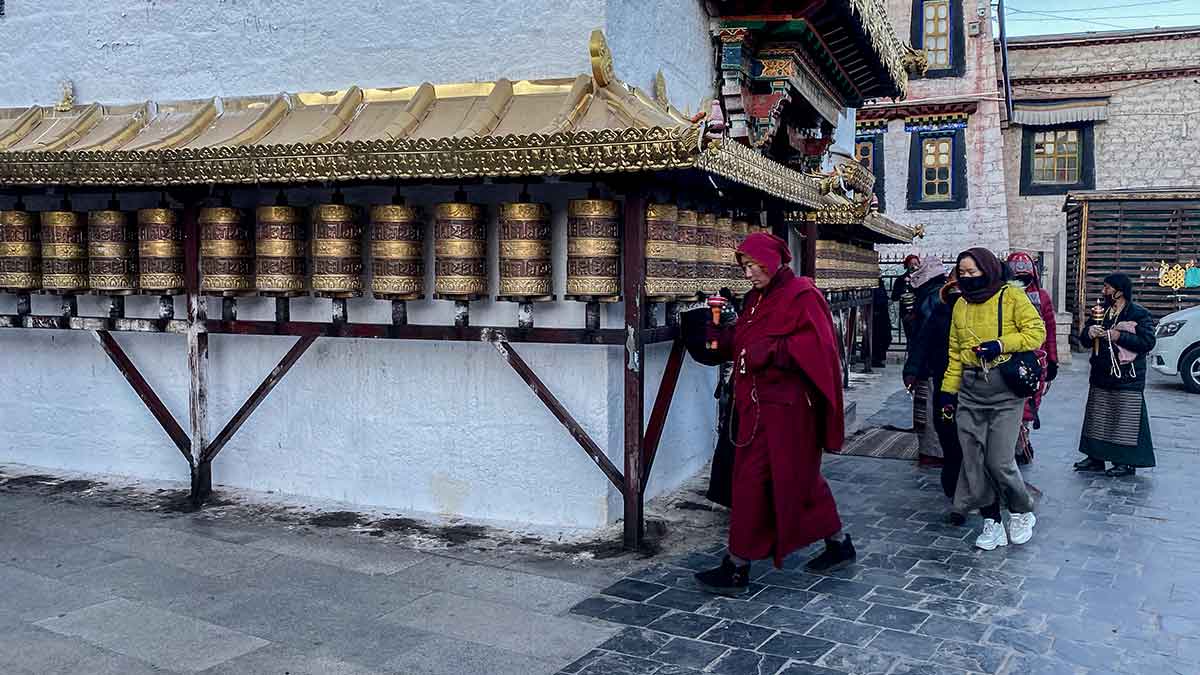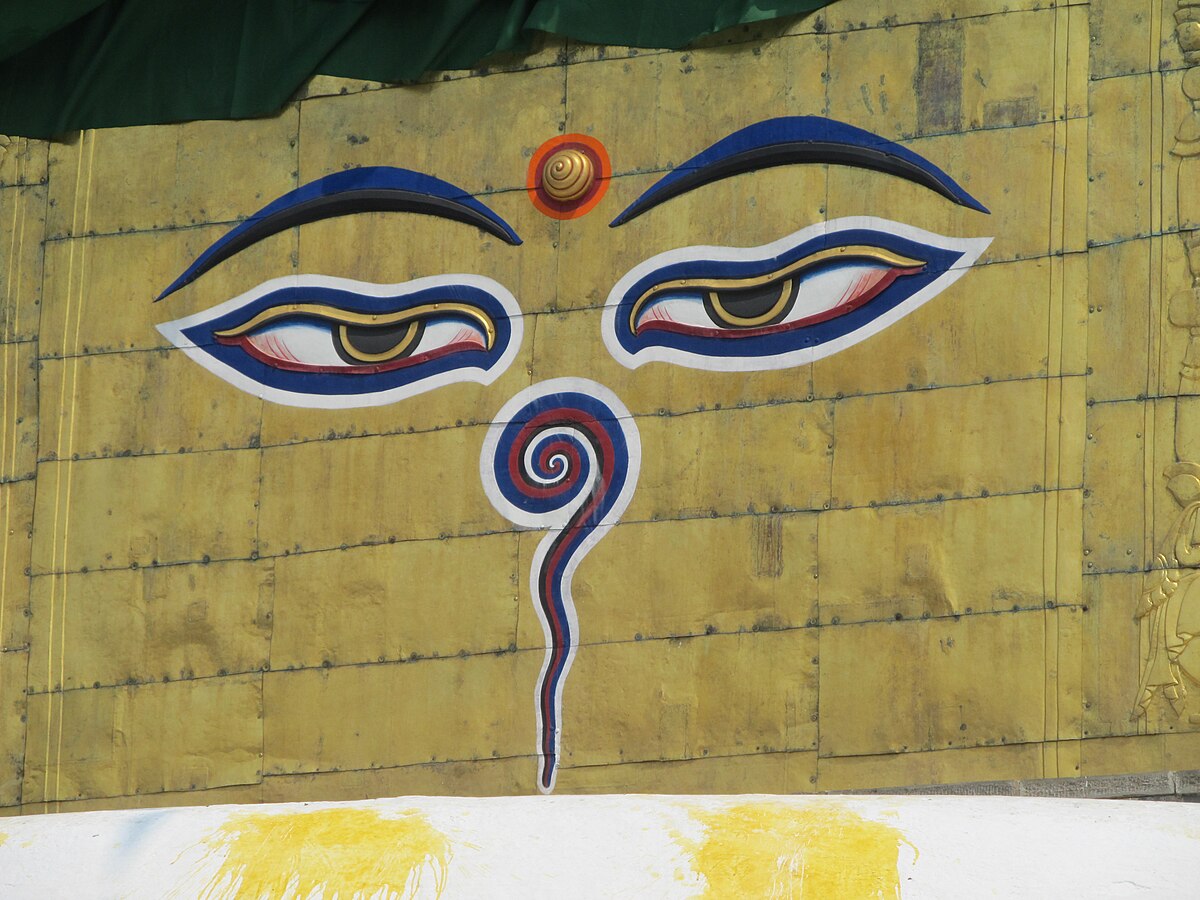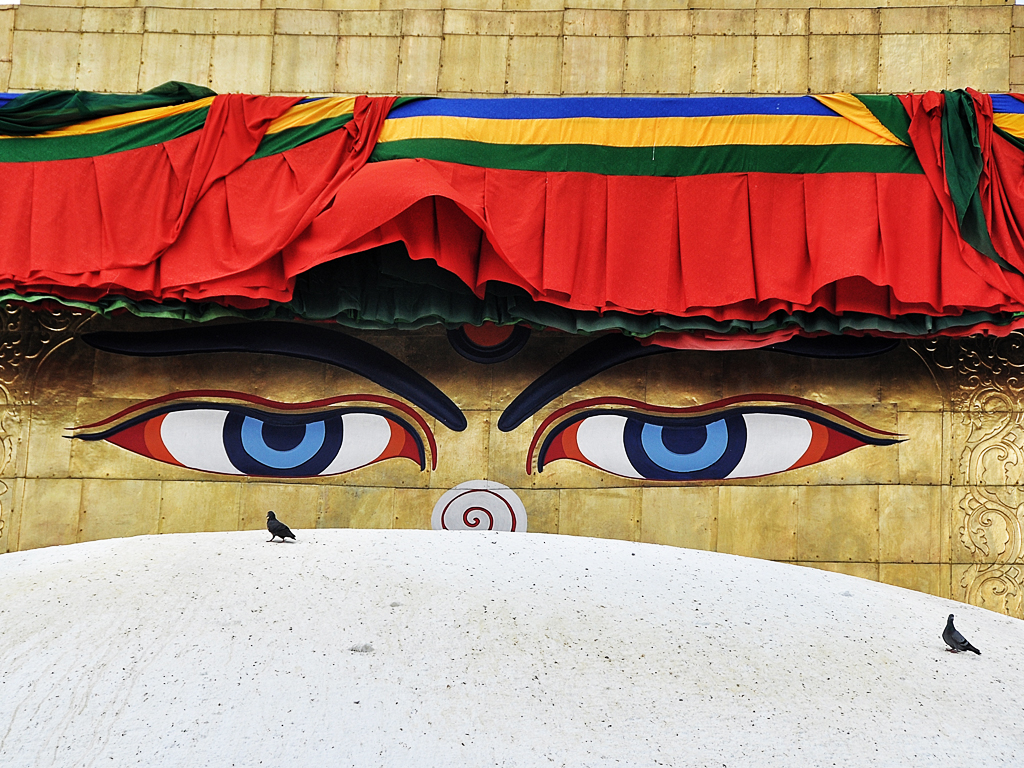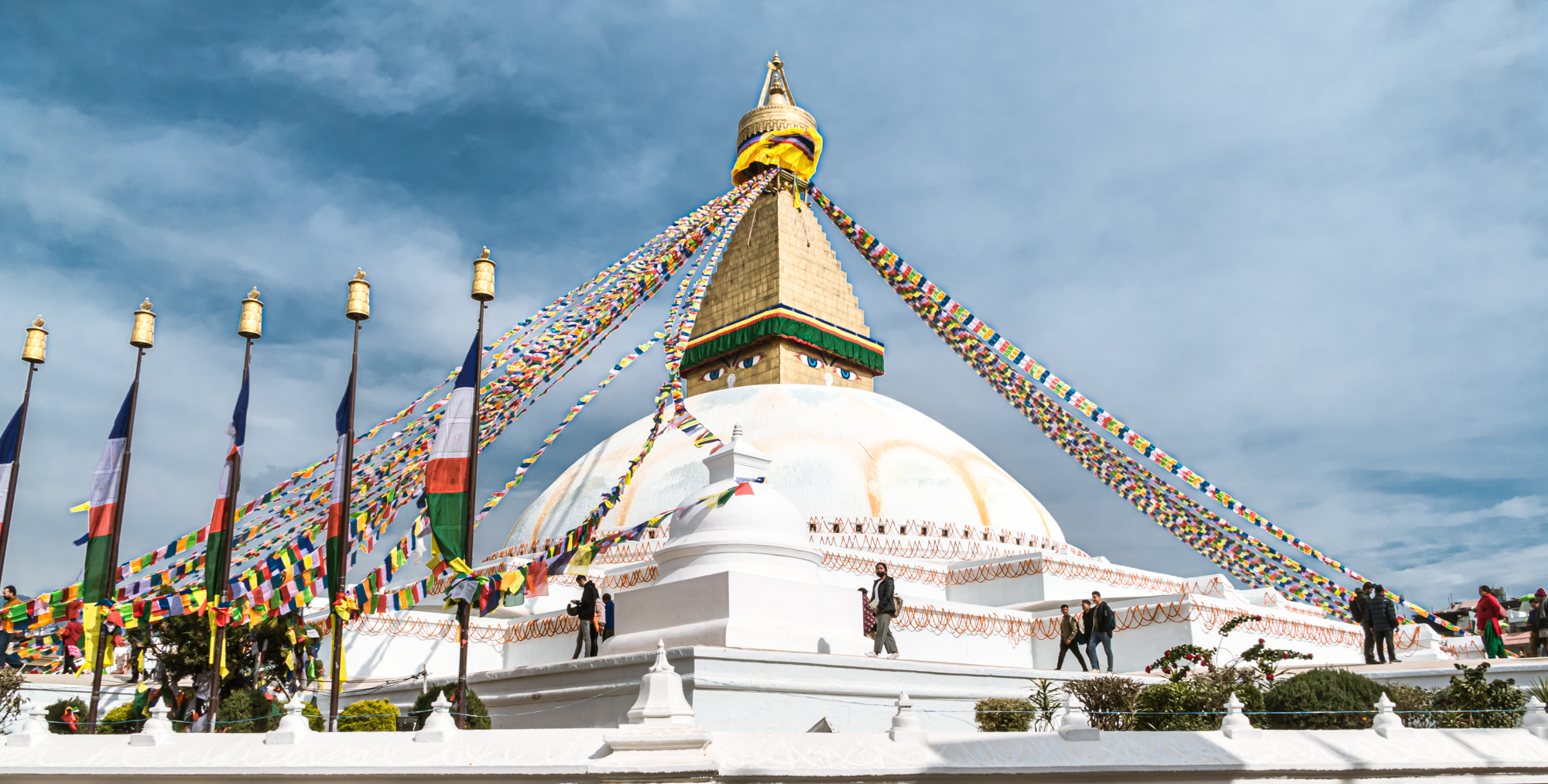
Boudhanath Stupa
History of Boudhanath Stupa
Bodhnath Stupa in Kathmandu, Nepal, is one of the largest and holiest Buddhist stupas in the world with a rich history dating back to the 5th century AD. According to legend, it was built by Queen Jadzima and her four sons as an act of devotion. The stupa symbolizes enlightenment and the all-encompassing nature of Buddha's teachings. It has been central to Tibetan Buddhism, especially after the 1959 Tibetan exile, becoming a UNESCO World Heritage Site. The stupa has undergone renovations, notably after the 2015 earthquake, preserving its spiritual and cultural significance for millions of pilgrims worldwide. The Bodhnath Stupa, also known as Boudha Stupa, is one of the world's largest spherical stupas and a UNESCO World Heritage Site since 1979. Its origins trace back to the Licchavi period in the 5th century AD, with some historical sources citing King Manadeva or King Vikramaditya as its founder. According to Nepalese legend, the stupa was built by a humble widow named Jadzima and her four sons, who are revered as Bodhisattvas in Tibetan Buddhism. The stupa symbolizes the Buddha's mind and the path to enlightenment, with its towering white dome crowned by Buddha's all-seeing eyes and a golden spire. Over centuries, it has become a focal point for Tibetan Buddhist culture, especially after the 1959 Tibetan exodus when many Tibetan refugees settled nearby. The stupa was damaged in the 2015 earthquake but underwent extensive restoration, preserving its spiritual and cultural significance.
Boudhanath Stupa Eyes
The Eyes of Buddha, painted on all four sides of the Boudhanath Stupa's tower, symbolize the Buddha's all-seeing wisdom and compassion. These large, half-closed eyes represent spiritual awareness watching over the world in all directions. Between the eyes is a curly symbol representing unity and the path to enlightenment, embodying the Buddha's omnipresent consciousness and guiding devotees toward spiritual awakening.
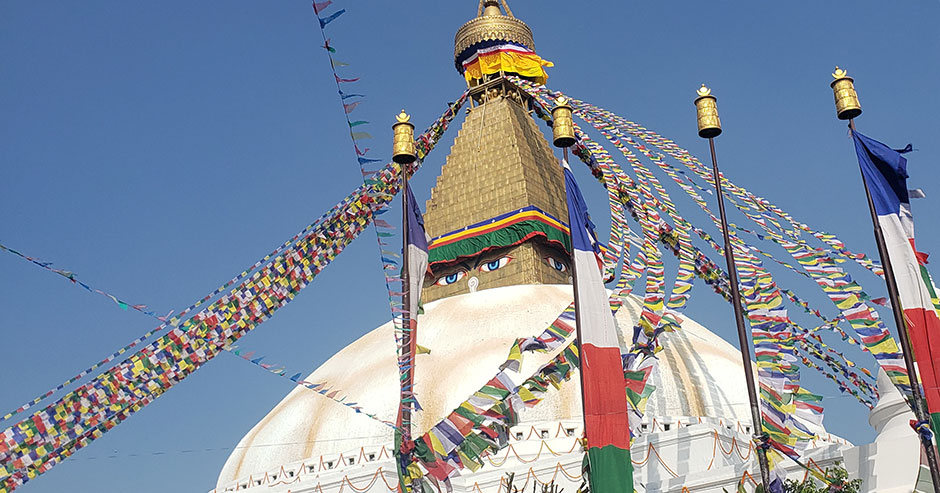
Prayer Flags at Boudhanath
Prayer flags at Boudhanath Stupa are colorful cloth squares inscribed with sacred mantras and symbols. As the wind blows, they spread prayers of peace, compassion, strength, and wisdom to all beings. The five colors represent the elements, promoting balance and harmony. These flags create a sacred atmosphere around the stupa, blessing the environment and visitors alike.
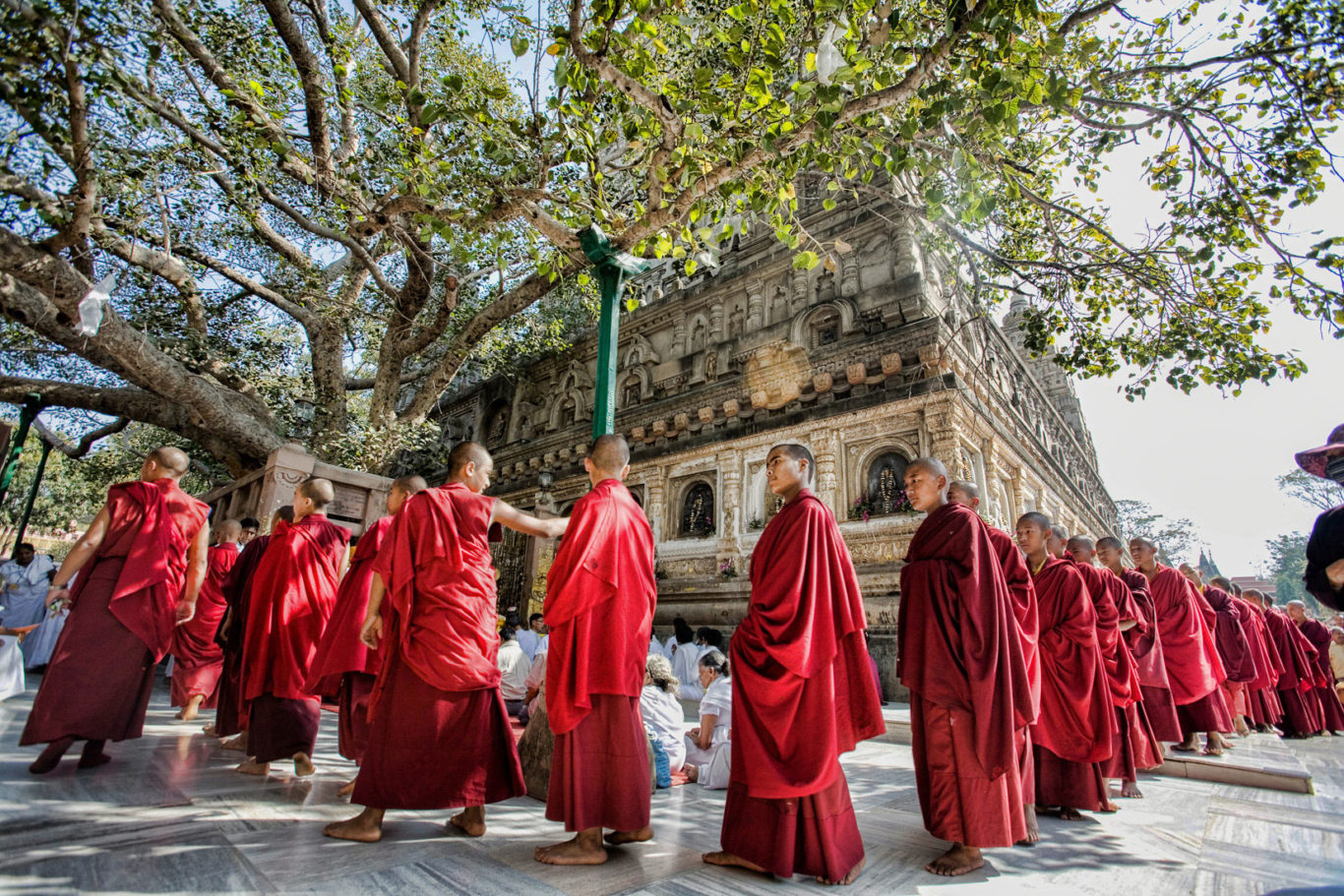
Circumambulation at Boudhanath
Circumambulation at Boudhanath Stupa, known as kora, is a sacred practice where devotees walk clockwise around the stupa while chanting prayers and spinning prayer wheels. This ritual symbolizes respect, meditation, and the journey toward enlightenment, helping purify negative karma and accumulate spiritual merit in Tibetan Buddhism.
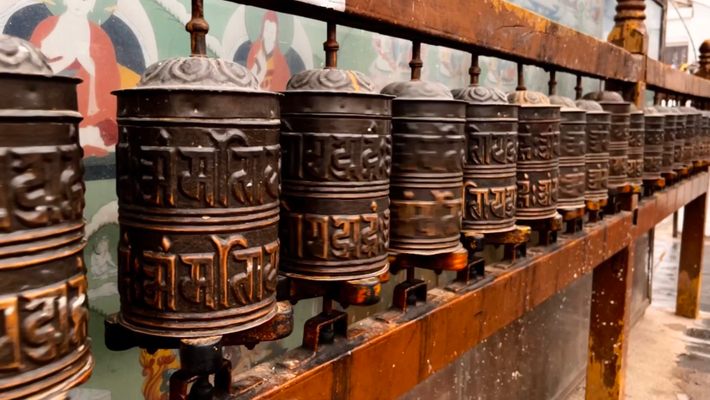
108 Wheels Boudhanath Stupa
The Boudhanath Stupa features 108 prayer wheels around its base, each inscribed with sacred mantras like 'Om Mani Padme Hum'. Pilgrims spin these wheels clockwise while circumambulating the stupa, believing this practice generates spiritual merit and spreads blessings, equivalent to reciting the mantras thousands of times. The wheels play a vital role in Buddhist ritual and devotion.
Visitors Image Gallery


